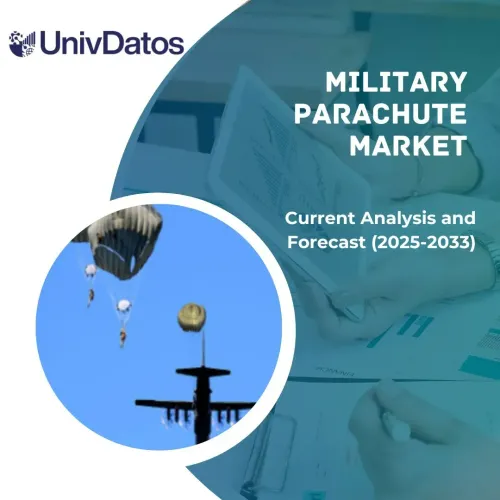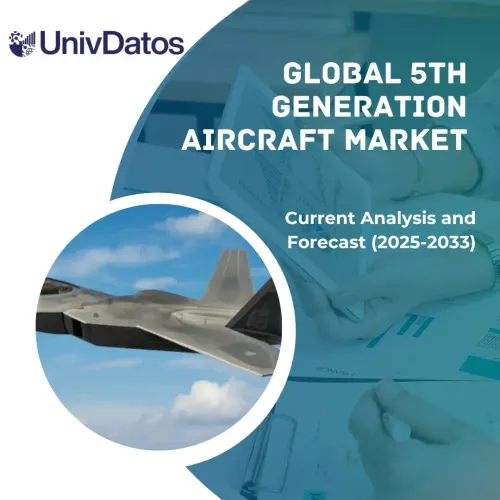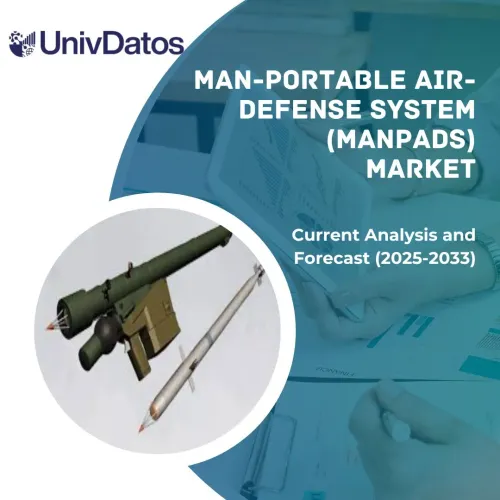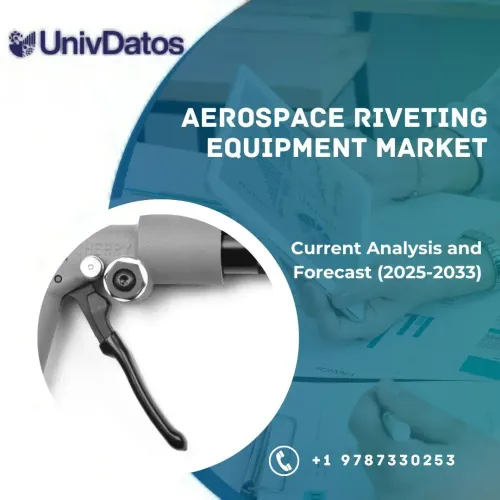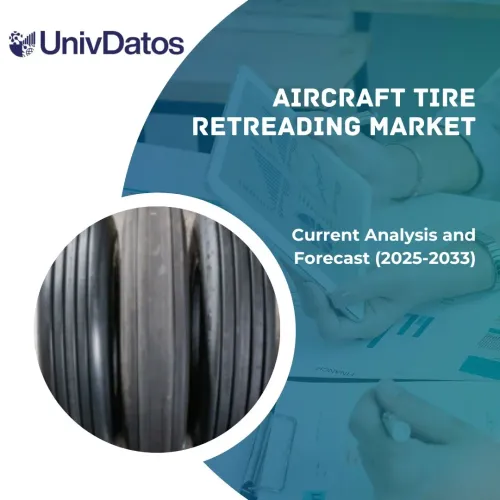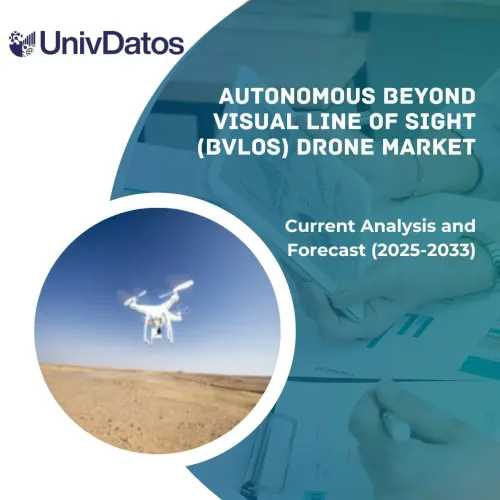- Home
- About Us
- Industry
- Services
- Reading
- Contact Us
Augmented and Virtual Reality in Aviation Market: Current Analysis and Forecast (2024-2032)
Emphasis on By Technology (Augmented Reality (Marker Based (Low Memory and Capacity Requirement, Passive Market, Active Marker), Non-Marker Based), Virtual Reality (Immersive (Enhanced User Experience, Semi-Immersive, Fully Immersive), Non- Immersive)); By Function (Training (Pilots, Crew & Ground Staff, Engineers), Operations (Airlines, MRO, Airport, Others)), By Product (Head-Mounted Display, Head-Up Display, Handheld Devices, Gesture Tracking Devices); By Component (Sensors, Processors & Controllers, Displays, Cameras, Others) and Regions (North America (The US, Canada, Rest of North America), Europe (Germany, The UK, France, Italy, Spain, Rest of the Europe), Asia-pacific (China, Japan, India, Rest of the Asia-pacific), Rest of the World)
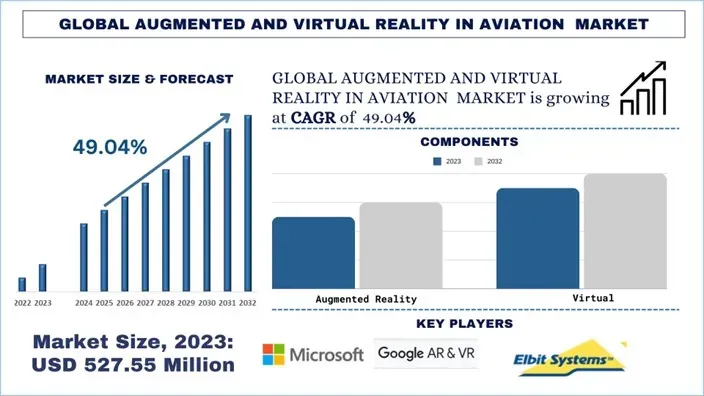
Global Augmented and Virtual Reality in Aviation Market Size & Forecast
The Global Augmented and Virtual Reality in Aviation Market was valued at USD 527.55 million in 2023 and is expected to grow at a strong CAGR of around 49.04% during the forecast period (2024-2032), owing to rising demand for Augmented and Virtual Reality in Aviation in the spacecraft industry across the globe.
Global Augmented and Virtual Reality in Aviation Market Analysis
Augmented and Virtual Reality in Aviation are used for predictive maintenance, remote assistance, visualization of maintenance issues, training purposes, and flight simulation for realistic scenarios. These technologies have provided interactive modules for immersive training scenarios for engineers and technicians. Additionally, various safety procedures and real-time guidance for crew and ground staff can also be provided with the help of AI and VR technologies, which has caused the market to witness a sizeable growth in recent years.
The Global Augmented and Virtual Reality in Aviation market was valued at USD 527.55 million in 2023 and is expected to grow at a strong CAGR of around 49.04% during the forecast period (2024-2032). One of the key factors that has remarkably supported the integration of the AR and VR solutions market in aviation is the integration of digital cockpits and head-up displays. These displays are integrated with the new generation of aircraft to overlay critical flight information such as navigation data, air speed, engine temperature, fuel, and altitude directly in the pilot’s view. Many of the aviation companies have started integrating head-up displays to offer such functionality to provide a compressive field of view to the pilot and offer better situational awareness. For instance, in 2024, the government of Singapore announced its plans to purchase 8 new F-35 aircraft. This purchase would be on top of an earlier 12 F-35A aircraft purchase signed by the government of Singapore.
In another instance, in 2024, the government of Germany announced its plans to purchase 20 additional Eurofighter Typhoon aircraft (4.5 generation) by the end of 2025.
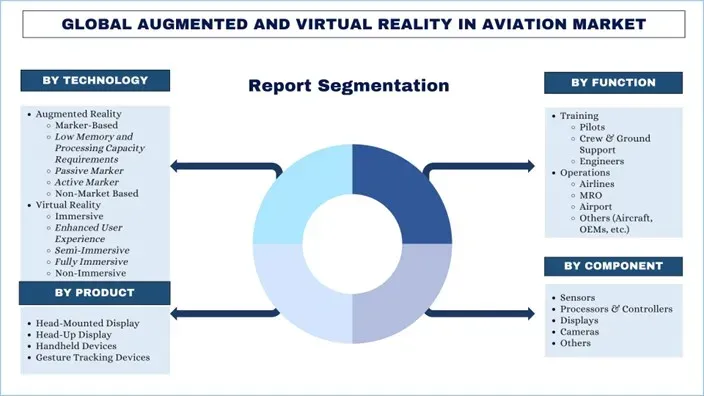
Global Augmented and Virtual Reality in Aviation Market Trends
This section discusses the key market trends that are influencing the various segments of the Global Augmented and Virtual Reality in Aviation Market as identified by our team of research experts.
AI and Machine Learning to Promote Predictive Maintenance
One of the key concerns of the aviation industry across the globe is timely maintenance and reducing the risk to a greater degree. With the advent of flight safety analytics and the integration of artificial intelligence and machine learning techniques, the ability to anticipate and mitigate possible risks has drastically improved. With the help of real-time data analysis, AI and machine learning can reduce the risk by providing predictive insights, which has earmarked its presence through its adoption by leading aircraft manufacturers. Airbus is one of the leading companies among these to adopt similar technologies as it uses Skywise, an open data platform that collects vast amounts of data from all the aircraft of Airbus, which helps to improve operational excellence by greater fleet operational performance and reliability.
With the growing need for predictive systems, AI diagnostics, and maintenance in the aviation industry, the demand for augmented and virtual reality in aviation in this category is anticipated to find rapid growth, subsequently improving its market in the coming years.
Augmented and Virtual Reality in Aviation Industry Segmentation
This section provides an analysis of the key trends in each segment of the global Augmented and Virtual Reality in Aviation market report, along with forecasts at the global, regional, and country levels for 2025-2033.
The Augmented Reality Market Holds the Largest Share of the Augmented and Virtual Reality in the Aviation Market.
Based on Technology, the augmented and virtual reality in the aviation market is bifurcated into augmented reality and virtual reality. Of these, augmented reality has held the major market share due to its increasing usage in training purposes for pilots, crew, and ground staff. Additionally, augmented reality offers an added overlay of vision on the existing vision of the pilots, which provides a realistic scenario of training in different environments. Augmented reality offers various advantages such as integration with the existing systems, hand-free operation, real-time information overlay, enhanced maintenance efficiency, safety, and accuracy while repair tasks, extensive usage in training scenarios, as well as helping to ensure compliance with stringent aviation regulations by providing documented procedures, checklists, and audit trails of maintenance activities.
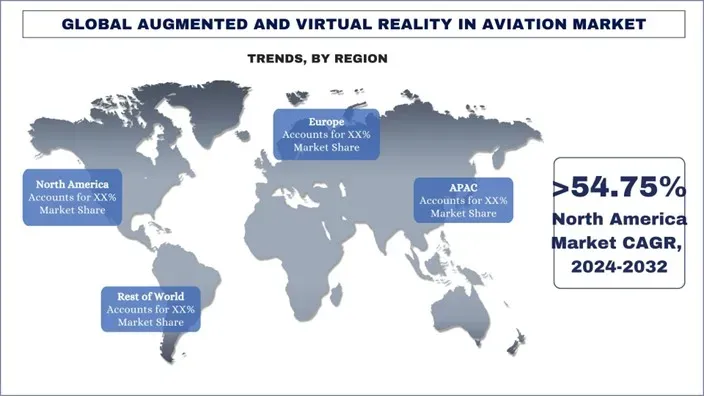
The Training Segment is Expected to Witness a Higher CAGR than the Augmented and Virtual Reality in the Aviation Market.
Based on the function, the global Augmented and Virtual Reality in Aviation market has been segmented into training and operations. Considering the shift in aircraft cockpits, there is a growing need to offer simulation-based training. As new-generation aircraft are equipped with digital systems focused on visual representation for the access of controls, there is a rising demand for flight simulation training. This training solution, based on AR and VR, could provide a realistic scenario and help the aviation and military industry to save costs spent on actual training. Operational training is another facet of AR and VR in the aviation industry, which is done for predictive maintenance and repair work through the visual representation of an actual aircraft. This technology is in a growing phase as a considerable number of aircraft are still from the older generation, and there is a lack of skilled staff for deploying, using, and maintaining such systems. However, with the shift in the aviation industry, the operational segment would be integrated at a faster pace and exhibit a faster growth rate.
North America is Expected to Hold a Major Market Share During the Forecast Period
North America Augmented and Virtual Reality in the Aviation market has held the major market share across the globe. Some of the key factors that have contributed to the growth are the presence of the largest commercial and military aircraft fleet requiring maintenance, repair, and overhaul activities regularly. The North American aviation industry is further anticipated to rise due to massive orders being placed by the leading aviation companies in recent years. For instance, in 2024, American Airlines ordered 260 new aircraft from Airbus, Boeing, and Embraer. With the massive purchase, the airline is looking forward to expanding its international operations for trans-Atlantic operations.
Boeing is one of the key manufacturers that has a vast list of unfilled orders, YTD deliveries, etc. For instance, according to Boeing, total unfilled orders for 737, 767, 777, and 787 models were 4763, 96, 539, and 790 units as of 5/31/2024.
Considering the vast unfilled orders that are to be delivered in the coming years, the demand for AI and VR technology services for maintenance and pilot training is anticipated to rise in the forecasted years, i.e., 2024-2032.
U.S. Dominates the North American Augmented and Virtual Reality in the Aviation Market
The US aviation market for augmented and virtual reality (AR/VR) is steadily growing since several airlines, defense contractors, and aviation training companies integrate AR/VR into their operations and products to increase safety, optimize processes, and attract passengers. Virtual and Augmented Reality is being adapted in pilot and crew training simulation, aircraft maintenance, and design models, where real-time interaction is provided along with high levels of risk elimination and improvement of training efficiency. And these technologies are fast replacing traditional practices in commercial and military aviation by making the tasks less complex, reducing errors, and encouraging teamwork that is done through networks. The increase in the general interest towards innovation and digital transformation of business processes contributes to the constant increase in demand for new, scalable AR/VR solutions in the aviation industry of the United States.
Augmented and Virtual Reality in the Aviation Industry Competitive Landscape
The Augmented and Virtual Reality in Aviation market is competitive, with several global and international players. The key players are adopting different growth strategies to enhance their market presence, such as partnerships, agreements, collaborations, new product launches, geographical expansions, and mergers and acquisitions.
Top Augmented and Virtual Reality in Aviation Market Companies
Some of the major players operating in the market are Microsoft Corporation, Google Inc., Eon Reality, Aero Glass, Honeywell International Inc., Sita, IBM, Bohemia Interactive Solutions, Oculus VR, and Elbit Systems Ltd.
Recent Developments in the Augmented and Virtual Reality in Aviation Market
- In January 2024, the French government announced the purchase of 42 additional Rafale Jets with a total cost of USD 5.5 billion. The respective aircraft will be delivered between 2027 to 2032.
- In 2024, the government of the Czech Republic signed a deal with the government of the US to buy 24 new F-35 jets. The total worth of the deal would be USD 6.6 billion, to be delivered between 2031 to 2035.
Global Augmented and Virtual Reality in Aviation Market Report Coverage
Details | |
Base year | 2023 |
Forecast period | 2024-2032 |
Growth momentum | Accelerate at a CAGR of 49.04% |
Market size 2023 | USD 527.55 million |
Regional analysis | North America, Europe, Asia-Pacific, Rest of the World |
Major countries | The US, Canada, The UK, France, Germany, Italy, Spain, China, Japan, India |
Companies profiled | Microsoft Corporation, Google Inc., Eon Reality, Aero Glass, Honeywell International Inc., Sita, IBM, Bohemia Interactive Solutions, Oculus VR, Elbit Systems Ltd. |
Report Scope | Market Trends, Drivers, and Restraints; Revenue Estimation and Forecast; Segmentation Analysis; Demand and Supply Side Analysis; Competitive Landscape; Company Profiling |
Segments Covered | By Technology, By Function, By Product, By Component, By Region/Country |
Reasons to Buy Augmented and Virtual Reality in Aviation Market Report:
- The study includes market sizing and forecasting analysis validated by authenticated key industry experts.
- The report presents a quick review of overall industry performance at a glance.
- The report covers an in-depth analysis of prominent industry peers with a primary focus on key business financials, product portfolios, expansion strategies, and recent developments.
- Detailed examination of drivers, restraints, key trends, and opportunities prevailing in the industry.
- The study comprehensively covers the market across different segments.
- Deep dive regional-level analysis of the industry.
Customization Options:
The Global Augmented and Virtual Reality in Aviation market can further be customized as per the requirement or any other market segment. Besides this, UnivDatos understands that you may have your own business needs; hence, feel free to contact us to get a report that completely suits your requirements.
Table of Content
Research Methodology for the Global Augmented and Virtual Reality in Aviation Market Analysis (2024-2032)
We analyzed the historical market, estimated the current market, and forecasted the future market of the global Augmented and Virtual Reality in Aviation market to assess its application in major regions worldwide. We conducted exhaustive secondary research to gather historical market data and estimate the current market size. To validate these insights, we carefully reviewed numerous findings and assumptions. Additionally, we conducted in-depth primary interviews with industry experts across the Augmented and Virtual Reality in Aviation value chain. After validating market figures through these interviews, we used top-down and bottom-up approaches to forecast the overall market size. We then employed market breakdown and data triangulation methods to estimate and analyze the market size of industry segments and sub-segments.
Market Engineering
We employed data triangulation techniques to finalize the overall market estimation and derive precise statistical numbers for each segment and sub-segment of the global Augmented and Virtual Reality in Aviation market. We split the data into several segments and sub-segments by analyzing various parameters and trends, including technology, function, product, component, and regions within the global Augmented and Virtual Reality in Aviation market.
The main objective of the Global Augmented and Virtual Reality in Aviation Market Study is to
The study identifies current and future trends in the global Augmented and Virtual Reality in Aviation market, providing strategic insights for investors. It highlights regional market attractiveness, enabling industry participants to tap into untapped markets and gain a first-mover advantage. Other quantitative goals of the studies include:
- Market Size Analysis: Assess the current and forecast market size of the global Augmented and Virtual Reality in Aviation market and its segments in terms of value (USD).
- Augmented and Virtual Reality in Aviation Market Segmentation: The study segments the market by technology, function, product, component, and region.
- Regulatory Framework & Value Chain Analysis: Examine the regulatory framework, value chain, customer behavior, and competitive landscape of Augmented and Virtual Reality in the Aviation industry.
- Regional Analysis: Conduct detailed regional analysis for key areas such as Asia Pacific, Europe, North America, and the Rest of the World.
- Company Profiles & Growth Strategies: Company profiles of the Augmented and Virtual Reality in Aviation market and the growth strategies adopted by the market leaders to sustain the fast-growing market.
Frequently Asked Questions FAQs
Q1: What is the current market size and growth potential of the Global Augmented and Virtual Reality in Aviation market?
The Global Augmented and Virtual Reality in Aviation market was valued at USD 527.55 Million in 2023 and is expected to grow at a CAGR of 49.04% during the forecast period (2024-2032).
Q2: What are the driving factors for the growth of the Global Augmented and Virtual Reality in Aviation market?
Growing demand for Augmented and Virtual Reality in Aviation, including training and predictive maintenance, is one of the key driving factors for growth.
Q3: Which segment has the largest share of the Global Augmented and Virtual Reality in Aviation market by technology?
The Augmented Reality segment has the largest share of the Global Augmented and Virtual Reality in Aviation market by technology.
Q4: Which region will dominate the Global Augmented and Virtual Reality in Aviation market?
North America is expected to dominate the market during the forecast period.
Q5: What are the major trends in the Augmented and Virtual Reality in Aviation market?
Increasing use of AR/VR in pilot and crew training is enhancing realism and safety, reducing training costs, and accelerating adoption across both commercial and military aviation sectors.
Q6: What are the biggest challenges in the Augmented and Virtual Reality in Aviation market?
High implementation costs and technical integration issues with existing aviation systems continue to hinder widespread adoption of AR/VR solutions, especially among smaller airlines and operators.
Q7: Who are the Top players in the global Augmented and Virtual Reality in Aviation market?
The leading companies driving innovation in Augmented and Virtual Reality in Aviation include:
Microsoft Corporation
Google Inc.
Eon Reality
Aero Glass
Honeywell International Inc.
Sita
IBM
Bohemia Interactive Simulations
Reality Labs Inc. (Meta)
Elbit Systems Ltd
Q8: How can augmented and virtual reality improve operational efficiency in aviation businesses?
AR/VR technologies streamline aviation operations by enabling real-time remote assistance for maintenance, enhancing crew training through immersive simulations, and supporting faster design and prototyping. These improvements reduce downtime, optimize resource usage, and increase accuracy across various aviation functions.
Q9: What factors should investors consider before funding AR/VR initiatives in the aviation sector?
Investors should assess technology maturity, regulatory compliance, integration capabilities with existing aviation systems, and the scalability of AR/VR solutions. Market readiness, partnership potential, and alignment with digital transformation trends in aviation are also critical considerations for informed investment decisions.
Related Reports
Customers who bought this item also bought

